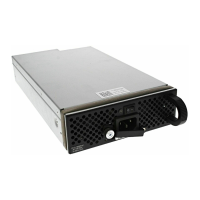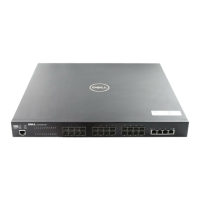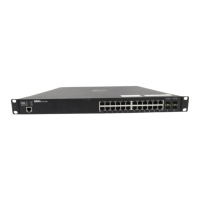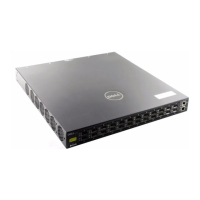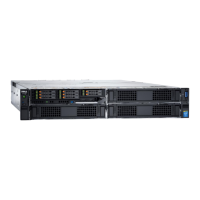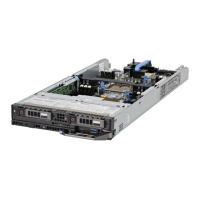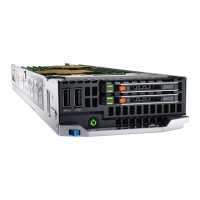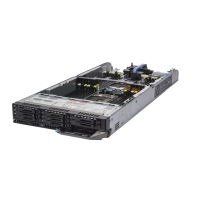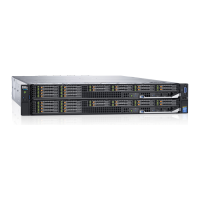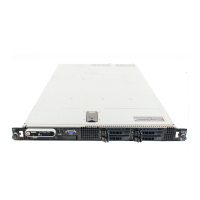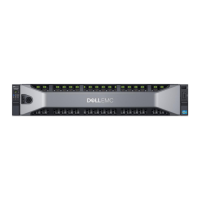Quality of Service (QoS) | 425
Configure Policy-Based Rate Shaping
To rate shape egress traffic, use the rate-shape command from QOS-POLICY-OUT mode.
Allocate Bandwidth to the Queue
To allocate bandwidth, use the bandwidth-percentage command in QOS-POLICY-OUT mode. FTOS
recommends that you pre-calculate your bandwidth requirements before creating them. Make sure you
apply the QoS policy to all the four queues and that the sum of the bandwidths allocated through them is
exactly 100.
When you apply the QoS policies through output policy map and if the sum of the bandwidth percentages
configured is below or above 100, then the actual bandwidth is allocated proportionally. If the sum of
allocated bandwidth is less than 100, the unused bandwidth is allotted to un-allocated queues. If the sums
of allocated bandwidth exceed 100, then 1% of the bandwidth is derived for unassigned queues from
assigned queues.
Configure a Scheduler to Queue
By default, the MXL Switch schedules packets for egress based on weighted round robin (WRR). Note that
the bandwidth and scheduler cannot be configured at the same time. Policy-level scheduler assigned to
queue is applied to both unicast and multicast traffic.
Specify WRED Drop Precedence
To specify a WRED profile to yellow and/or green traffic, use the wred command from
QOS-POLICY-OUT mode. For more information, refer to Apply a WRED Profile to Traffic.
Create Policy Maps
There are two types of policy maps: input and output.
Create Input Policy Maps
There are two types of input policy-maps: Layer 3 and Layer 2.
1. To create a Layer 3 input policy map, use the
policy-map-input command from CONFIGURATION
mode. Create a Layer 2 input policy map by specifying the keyword
layer2 with the policy-map-input
command.
2. After you create an input policy map, do one or more of the following:
• Apply a Class-Map or Input QoS Policy to a Queue
• Apply an Input QoS Policy to an Input Policy Map
• Honor DSCP Values on Ingress Packets
• Honoring dot1p Values on Ingress Packets
• Fall Back to trust diffserve or dot1p
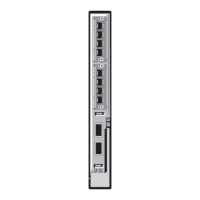
